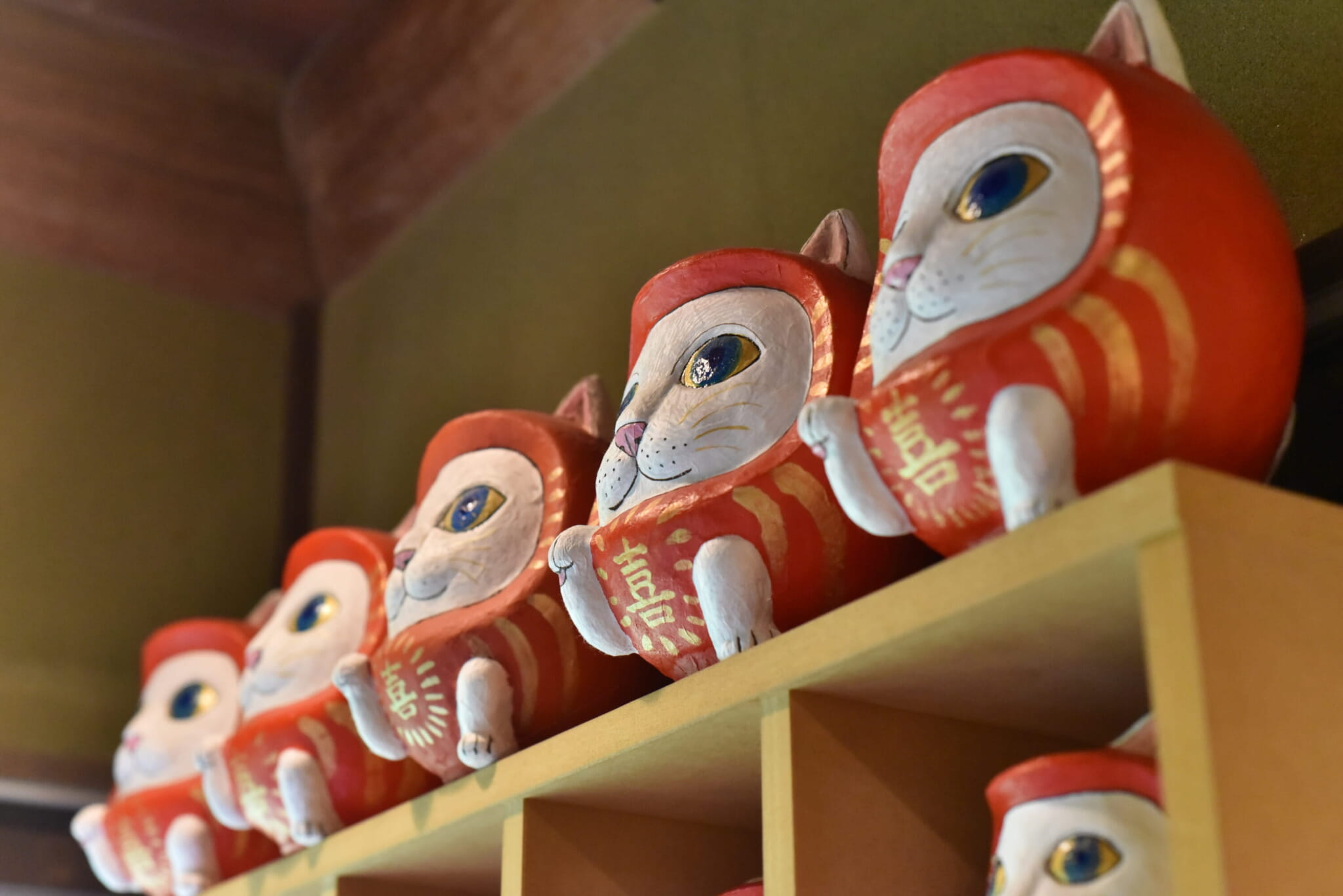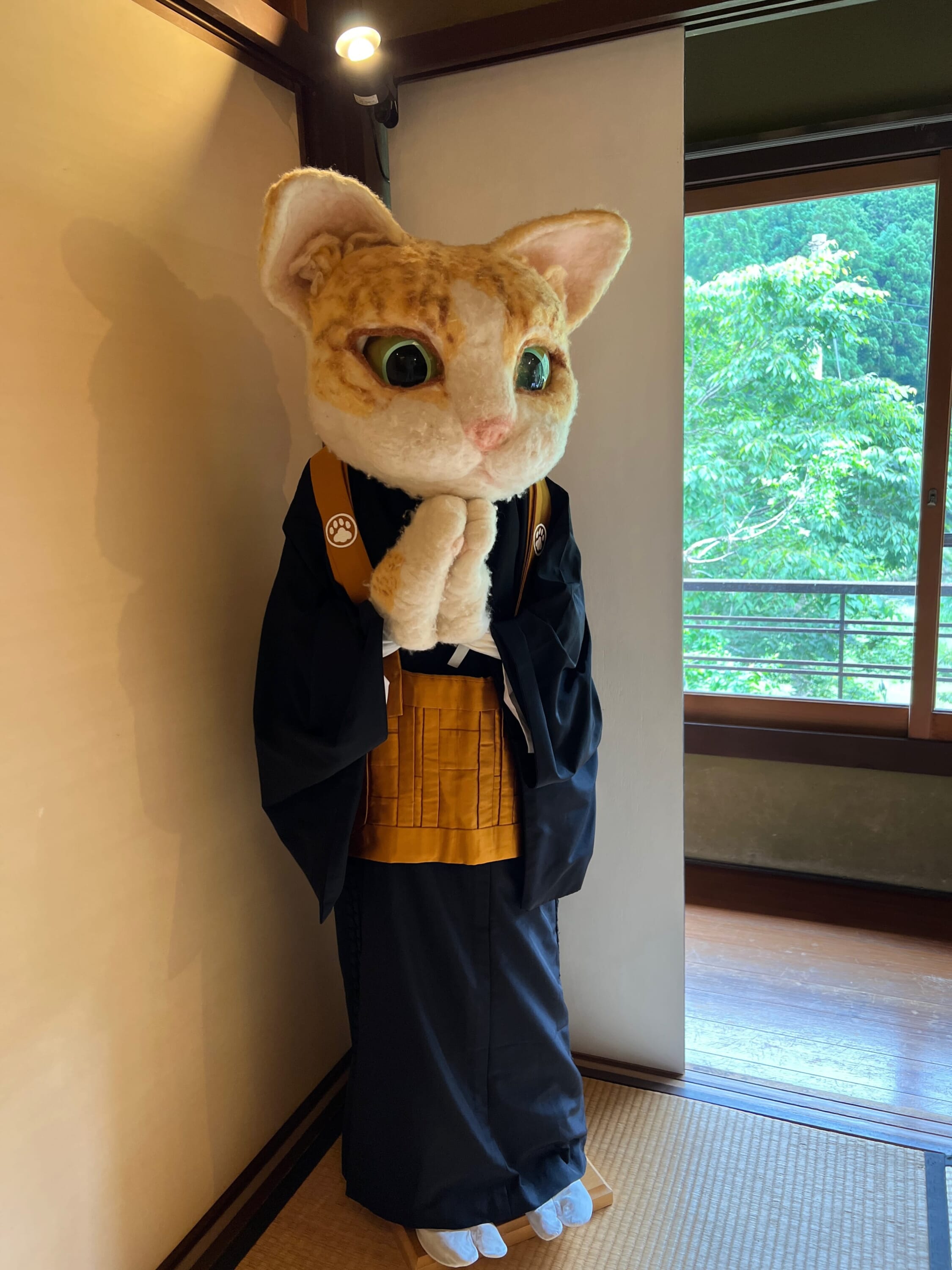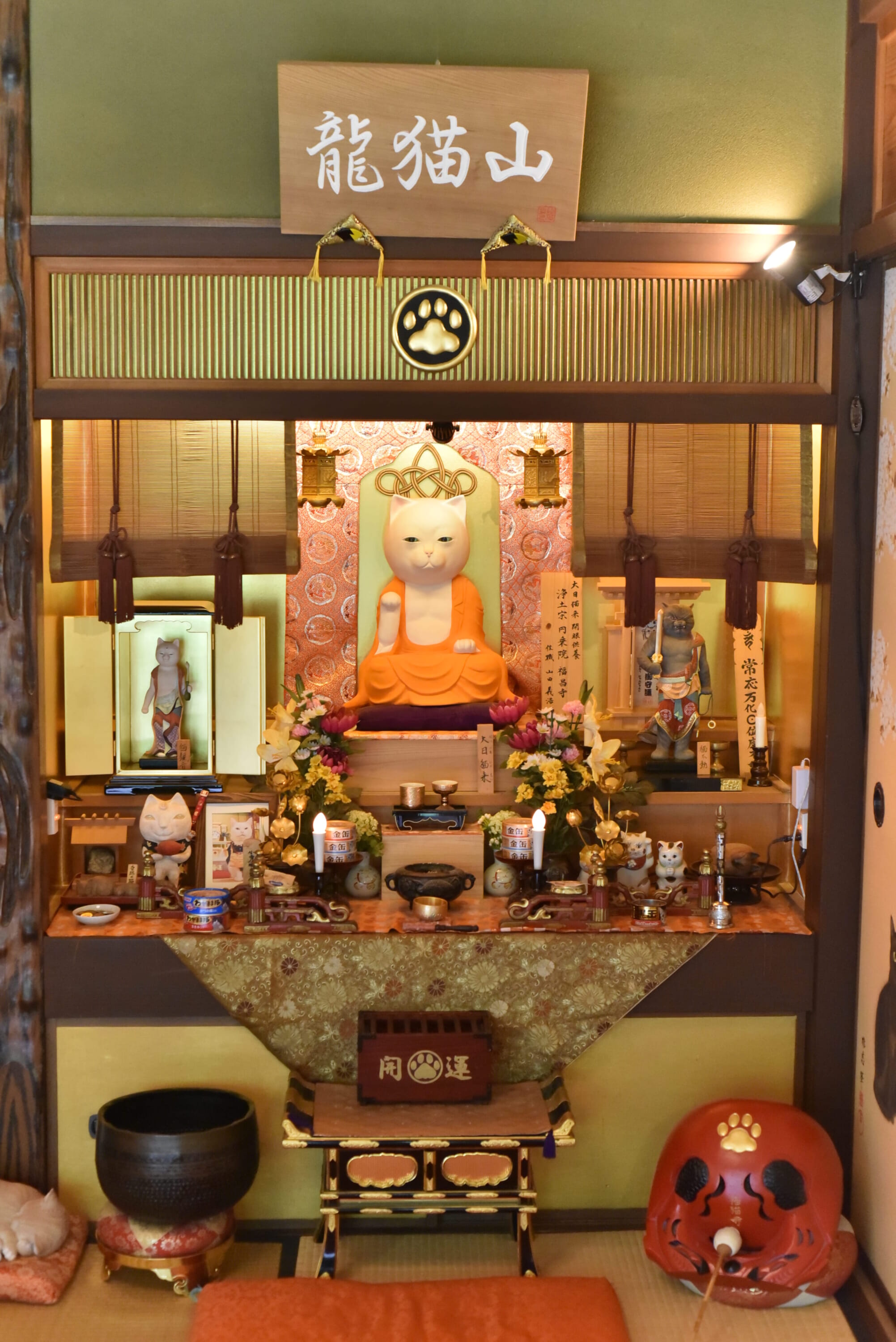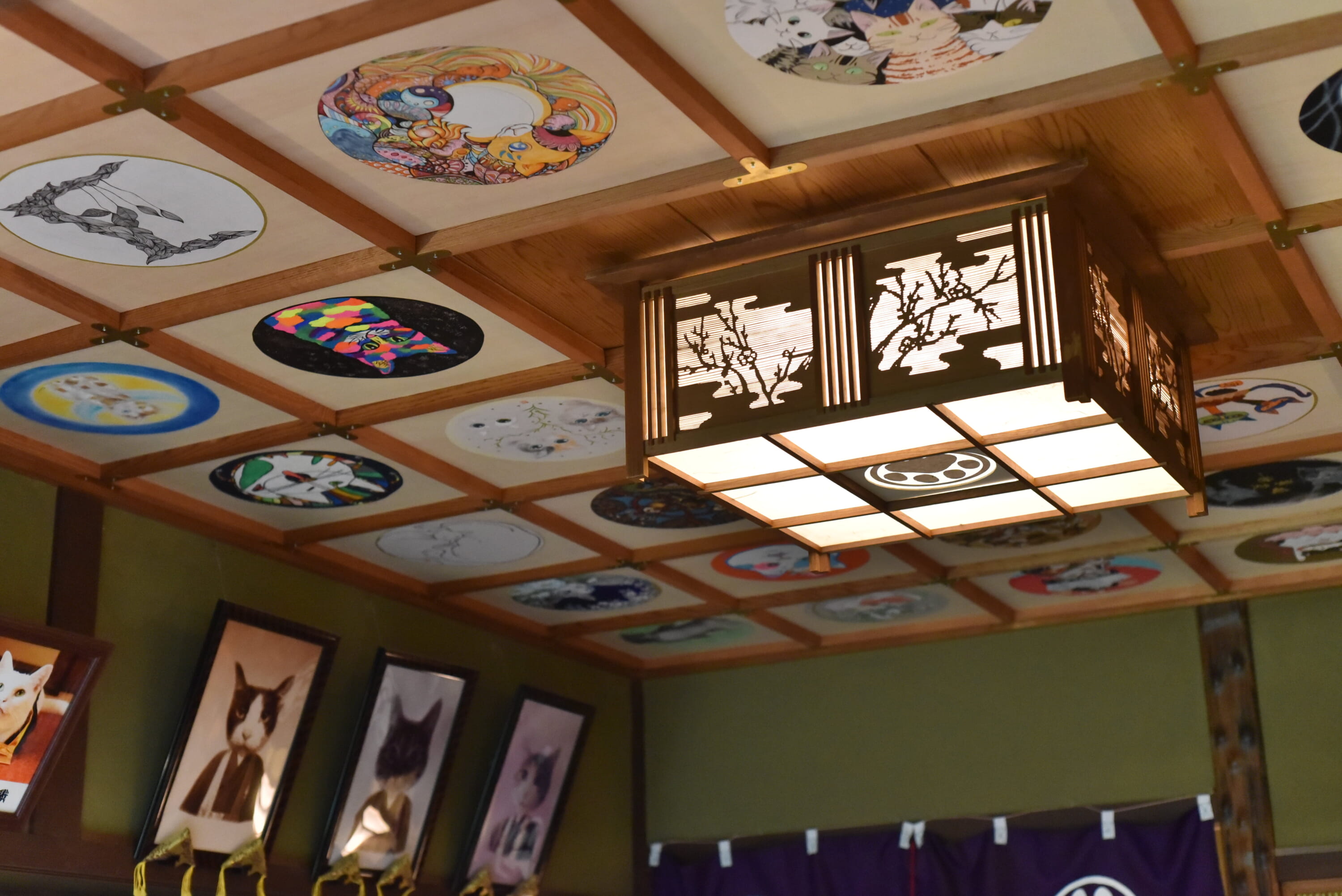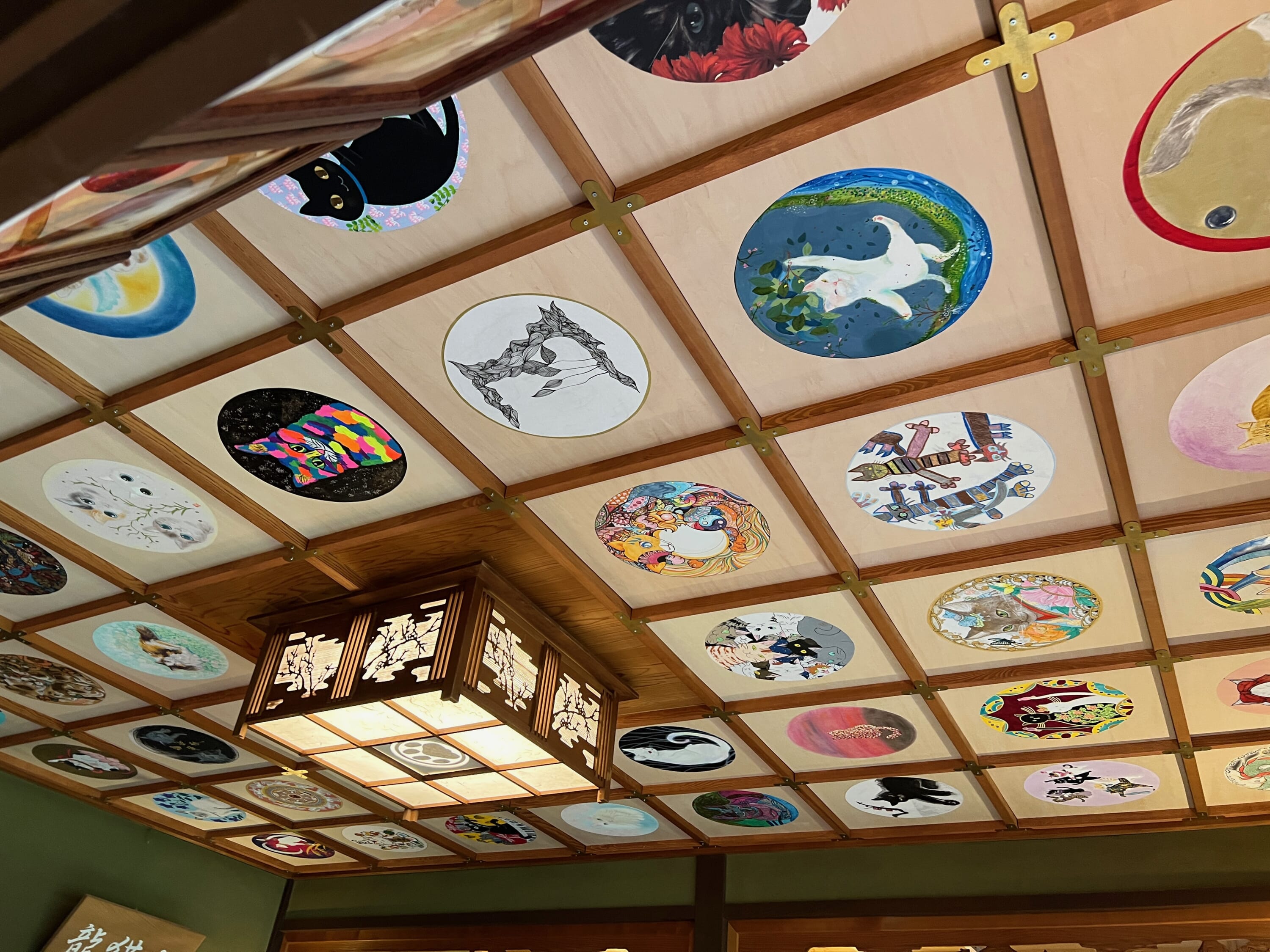In the lush green forests outside Kyoto’s city center, in Yasekonoecho, lies a place where the spiritual and feline worlds intersect. Nyan Nyan-ji, which literally translates to Meow Meow Temple, is a haven for cat lovers. While bearing the name temple, it is actually a 100-year-old traditional Japanese house, known here as a kominka, that was converted into a temple-like art museum.
Upon entering, guests are greeted by the mini figure of a beckoning cat. Going further in, there are a series of feline images. They are found in paintings, murals and sculptures in the hallway and different rooms inside of this two-storied Japanese house.
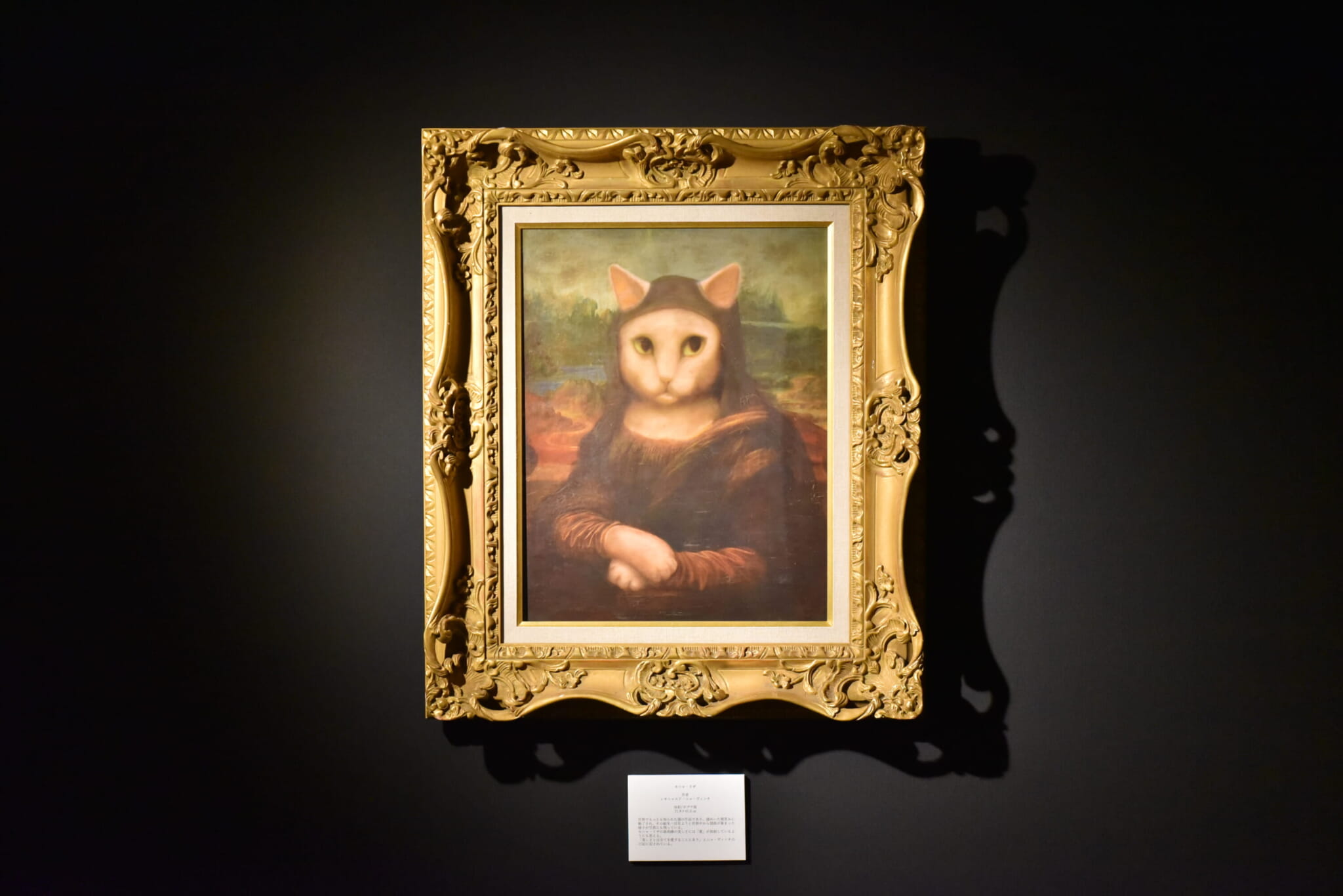
“Monyalisa” (Mona Lisa)
The Establishment of Nyan Nyan-ji
The Kaya family, the owners of Nyan Nyan-ji, say that establishing the cat temple felt like a matter of course.
“We leveraged the strengths and talents of every family member and built this temple,” Junko Kaya, the mother of the family tells us.
The family has long taken care of cats as home pets. Also, Junko has been a long-time collector of cat artwork, while her son Miyano, 24, is an artist who has focused exclusively on cats as a motif since he was a child.
“In that kind of environment, it felt natural that we would feature cats in everything we do,” Junko explains.
Toru, the father of the family, also has a professional background as a painter for shrines and temples. Building a cat temple subsequently seemed like an obvious choice. Nyan Nyan-ji opened to the public in 2016.
The Cat Priests
Walking into the main hall of Nyan Nyan-ji, the Cat Buddha stands tall. There are also two statues placed on its sides: the Cat Fudo Myo-o on the right and the Cat Bodhisattva on the left.
Beneath the Cat Buddha is a small cat curled up on a cushion. Upon closer inspection, one finds it is not a real cat, but a lifelike cat doll made of felt. Then there’s Mayo, a real cat and the chief priest on duty that day, peacefully napping in a corner near the staircase. She’s wearing a traditional Japanese garment worn around the neck of Buddhists called a rakuse.
Mayo is a two-year-old mix of Scottish Fold and British Longhair. She loves to nap wherever and whenever possible. The temple’s fifth generation chief cat priest, she approaches incoming visitors with curious eyes seeking affection. If tired, she simply lies down and goes to sleep.
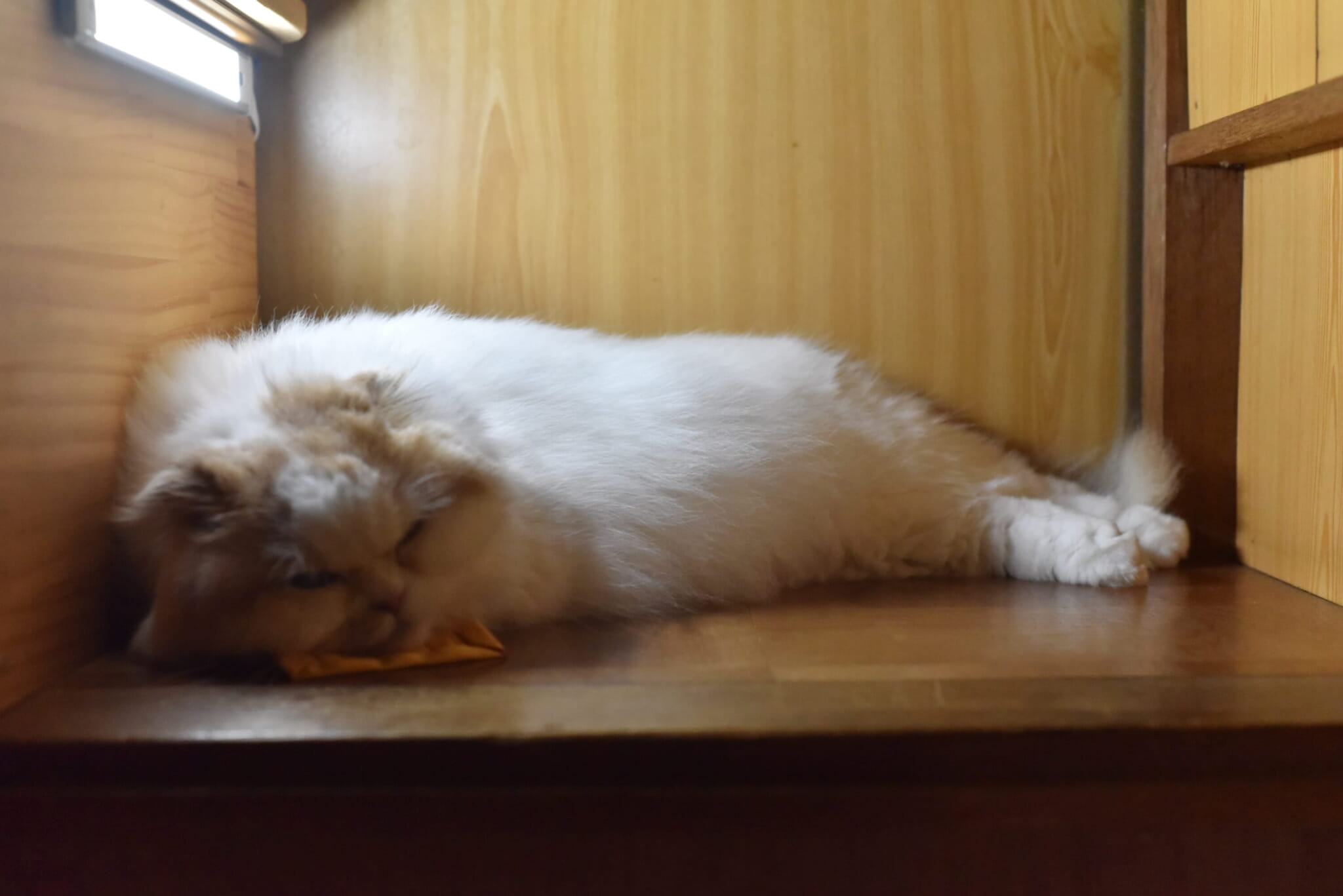
Sleeping Mayo
Mayo is not a house cat but belongs to a stranger, who offered her to serve at the temple. “Any cat with a nice temperament is eligible to become a priest here,” Junko says.
Many of the feline priests, in fact, do not belong to the temple but are visitor’s pets who receive snacks and meals as rewards. The owners go home with them at the end of the day. Mayo, though, is the temple’s superstar cat.
On February 2, 2022 — Neko Day — Mayo was ordained as a cat priest of Nyan Nyan-ji. Since then, she has been fulfilling her chief priest duties once a month. These include welcoming visitors and praying for the wishes that guests leave on their ema (votive tablets), which can be bought at the temple.
Lucky visitors may even encounter the temple’s very own maneki neko (lucky cat), Fuku-chan, who usually hangs out just outside the entrance. He was designated as being responsible for patrolling the temple’s exterior area and is believed to bring good luck to anyone who sees him.
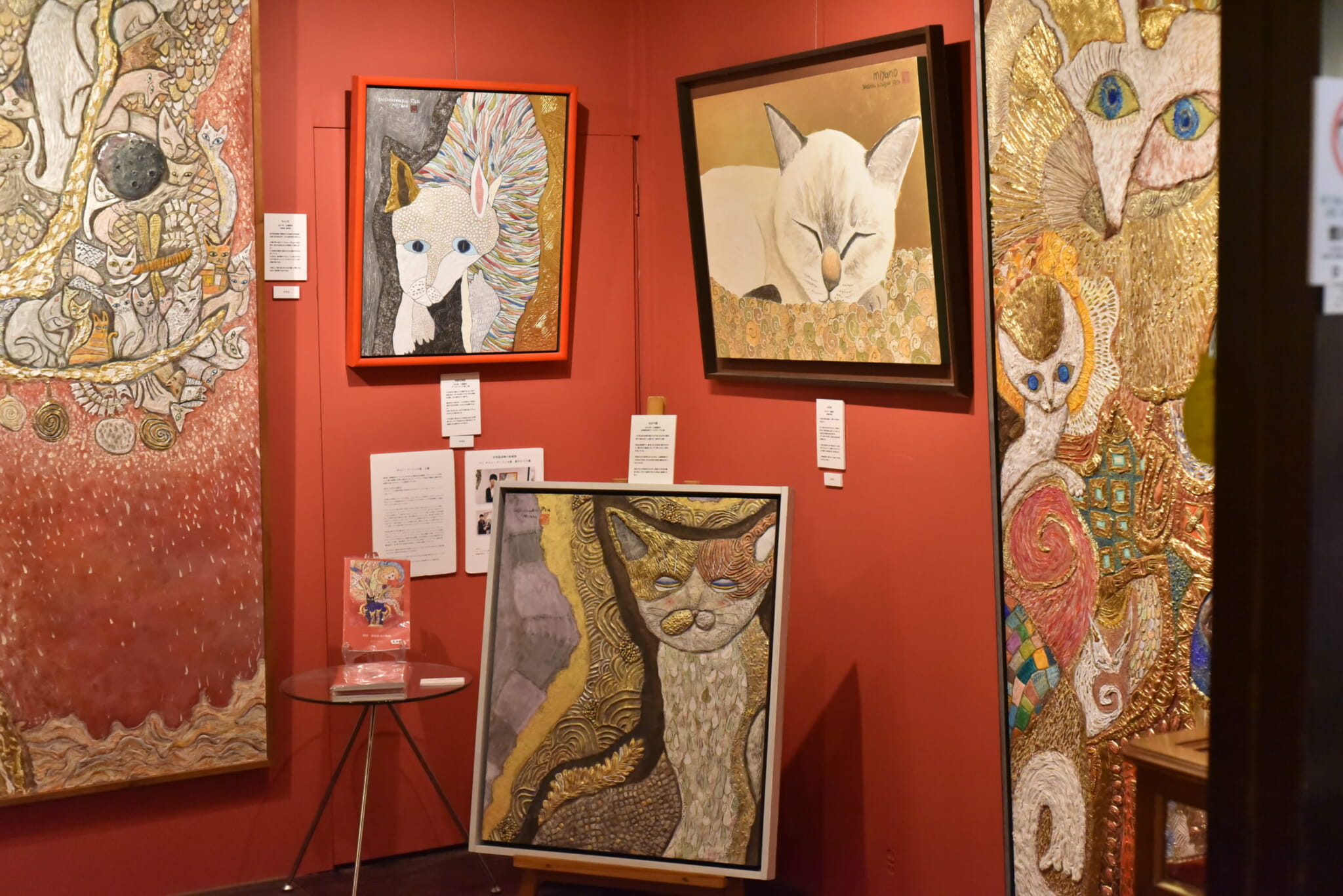
Miyano’s art
Cat Art Highlights
Aside from the living and breathing felines that roam the temple, another highlight of Nyan Nyan-ji is the art (both produced in-house as well as sourced from outside). The museum primarily displays artworks by Miyano, who has been drawing cats since he was 11. His work has garnered many awards and has been showcased in Salon d’automne exhibitions in Paris. Visitors can enjoy his cat-themed artworks and even purchase them. For example, “Cat King,” that won the New Wave Award at the 46th Seisu Exhibition in 2019, is for sale, priced at ¥33 million. It is one of his 16 awarded works, but the only one available for sale.
The ceiling paintings are also well worth looking out for. The Kaya family collected cat-themed artworks from 44 painters through social media, which they used to create the pattern for the ceiling murals of the main hall. From the traditional to the abstract, each artwork encompasses various artistic techniques that showcase the artists’ creative brilliance.
The museum located in the basement also hosts regular art exhibitions. At the time of our visit, it was the “World Cat Masterpieces Exhibition,” which featured reproductions of world-famous artworks with cats as the subject, like the “Monyalisa” (Mona Lisa) and “Nyanku no Scream” (The Scream). Even the artists’ names have been cat-ified, such as “Leonyardo Nya Vinci,” for instance.
Don’t leave without checking out the gift shop, which features handmade crafts by approximately 150 artists from across the country.
“Some items are scouted out by attending cat events and some come from artists who reached out to us,” Junko says.
For more information, check out the official website.
Check out one more Kyoto destination for cat lovers — the Japan Cat Network’s machiya house.
Article written by: Meishan Liu and Clarence Rowan
This article is a collaboration between Tokyo Weekender and Akita International University, Global Communication Practices (graduate school).

